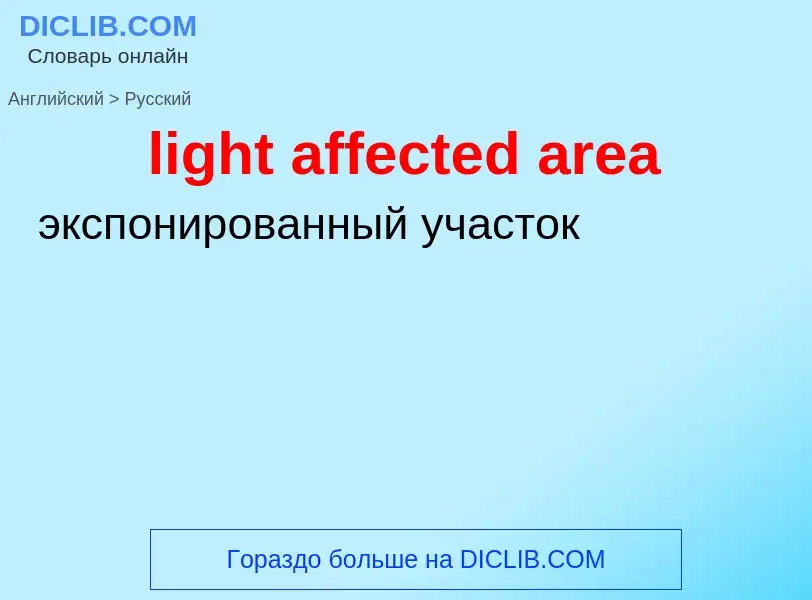Перевод и анализ слов искусственным интеллектом ChatGPT
На этой странице Вы можете получить подробный анализ слова или словосочетания, произведенный с помощью лучшей на сегодняшний день технологии искусственного интеллекта:
- как употребляется слово
- частота употребления
- используется оно чаще в устной или письменной речи
- варианты перевода слова
- примеры употребления (несколько фраз с переводом)
- этимология
light affected area - перевод на русский
- closed area
- controlled area
- controlled access area
- fenced area
- fingerprint pattern area
- high risk area
- inaccessible area
- key area
- limited area
- logically protected area
- monitored area
- physically protected area
- protected area
- restricted area
- secret area
- secure area
- secure storage area
- security-sensitive area
- survey area
- target area
- user area
[red'laitdistrikt]
общая лексика
квартал публичных домов
['e(ə)riə]
общая лексика
область
район
зона
ареал
область обитания
площадь
пространство
участок
область, участок
область памяти, часть экрана
сфера деятельности
область специализации
медицина
место
плоскость
строительное дело
площадь (помещения, поверхности, фигуры и т. п.)
площадка
внутренний двор
пространство, зона
приямок (напр. у окна подвального этажа)
нефтегазовая промышленность
поверхность
зона, район, область, территория, участок
существительное
общая лексика
площадь
пространство
участок
район
область
зона
сфера (деятельности)
область (исследования и т. п.)
размах
охват
сфера
проход
ведущий к входу в подвал
приямок перед окнами подвального этажа
площадь, пространство
край
размах, сфера
дворик ниже уровня улицы, через который проходят в полуподвал
анатомия
поле (коры головного мозга)
синоним
общая лексика
единица площади
Википедия

In fusion welding, the heat-affected zone (HAZ) is the area of base material, either a metal or a thermoplastic, which is not melted but has had its microstructure and properties altered by welding or heat intensive cutting operations. The heat from the welding process and subsequent re-cooling causes this change from the weld interface to the termination of the sensitizing temperature in the base metal. The extent and magnitude of property change depends primarily on the base material, the weld filler metal, and the amount and concentration of heat input by the welding process.
The thermal diffusivity of the base material plays a large role—if the diffusivity is high, the material cooling rate is high and the HAZ is relatively small. Alternatively, a low diffusivity leads to slower cooling and a larger HAZ. The amount of heat input during the welding process also plays an important role as well, as processes like oxyfuel welding use high heat input and increase the size of the HAZ. Processes like laser beam welding and electron beam welding give a highly concentrated, limited amount of heat, resulting in a small HAZ. Arc welding falls between these two extremes, with the individual processes varying somewhat in heat input. To calculate the heat input for arc welding procedures, the following formula is used:
where Q = heat input (kJ/mm), V = voltage (V), I = current (A), and S = welding speed (mm/min). The efficiency is dependent on the welding process used, with gas tungsten arc welding having a value of 0.6, shielded metal arc welding and gas metal arc welding having a value of 0.8, and submerged arc welding 1.0.



![Judge]]'' cover Judge]]'' cover](https://commons.wikimedia.org/wiki/Special:FilePath/JudgeMagazine12Jan1901.jpg?width=200)
![A statue in honor of [[sex worker]]s in [[Amsterdam, Netherlands]] A statue in honor of [[sex worker]]s in [[Amsterdam, Netherlands]]](https://commons.wikimedia.org/wiki/Special:FilePath/Sex worker statue Oudekerksplein Amsterdam.jpg?width=200)

![[[Reeperbahn]] in [[Hamburg]], [[Germany]] [[Reeperbahn]] in [[Hamburg]], [[Germany]]](https://commons.wikimedia.org/wiki/Special:FilePath/Reeperbahn at dawn.jpg?width=200)
![[[Soi Cowboy]], [[Bangkok, Thailand]] [[Soi Cowboy]], [[Bangkok, Thailand]]](https://commons.wikimedia.org/wiki/Special:FilePath/Soi Cowboy - Bangkok.jpg?width=200)
![Rooms illuminated by red lights in [[De Wallen]], [[Amsterdam, Netherlands]] Rooms illuminated by red lights in [[De Wallen]], [[Amsterdam, Netherlands]]](https://commons.wikimedia.org/wiki/Special:FilePath/RedLightDistrictAmsterdamBloedstraat.jpg?width=200)
![[[Rue d'Aerschot]], [[Brussels, Belgium]] [[Rue d'Aerschot]], [[Brussels, Belgium]]](https://commons.wikimedia.org/wiki/Special:FilePath/Aarschotstraat.jpg?width=200)
